Photo


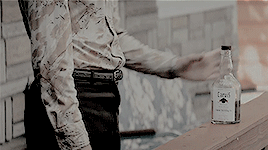

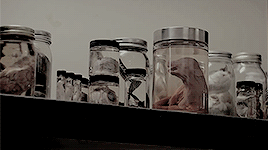



“you seem healthy to me”
“what about what’s on a patient’s mind?”
[x]
1K notes
·
View notes
Text
My Friend Dahmer, the Boy Who Didn’t Belong

“It became a symbol of his wasted youth. His face blacked out. The boy who didn’t belong” (Backderf)
Marc Meyer’s My Friend Dahmer tries to give its audience a peek behind the curtain of one of America’s most prolific serial killers, Jeffrey Dahmer. The film was adapted from Derf Backderf’s graphic novel by the same name. Backderf was, for a short time, friends with Dahmer in high school. Dahmer served as somewhat of a muse for Backderf, both in high school and later on in life.
My Friend Dahmer shows the workings of Dahmer’s mind during his youth. Viewers watch as he becomes enamored with a jogger who runs by his street every Monday, Wednesday and Friday at a certain time. Dahmer begins to wait for the jogger in the bushes, hoping to attack him one day and fulfill his fantasies of having intercourse with an unconscious body. It is the first sign we see of something being off with Dahmer, until we get a peak into his shed. Inside various mason jars are corpses of animals, all of which Dahmer has dissolved in acid.
The film does not try to have the viewer sympathize with Dahmer, but it does try to show where he came from. His parents fight constantly due to his mother’s need for attention and his father’s inability to give it to her. This effects Dahmer due to the fact that he, like his mother, also craves attention. If he can not get it at home, he tries to get it at school. He begins “spazzing out” and faking epileptic seizures, to the amusement of his classmates. As a result of the performance Dahmer gives, he becomes friends with a group of boys who dub themselves the Jeffrey Dahmer Fan Club, with Backderf being the president.
As the comedic antics of Dahmer begin to lose its appeal with those who once enjoyed them, he shifts back into his state on loneliness. All he has now is his thoughts and the six pack of beer he drinks almost every morning. Jeffrey Dahmer, the weirdo, loner, drunk. These were all ingredients that would result in the death of seventeen young men, most of which were men of color.
We learn that Dahmer was curious about bones, and the inside of bodies. His detachment from reality allowed him to venture into the deep darkness that was the crimes he committed. Dahmer craved attention, and yet his personality and actions as a whole did nothing but drive people away in his youth. In the end, he got all of the attention he could of ever hoped for. Media sentimentalization, going down in history as one of the most gruesome killers, and various films trying to make sense of what drove to these crimes.
“I think it’s the scariest thing you’ve read in a while. I know it still scares the hell out of me” (Backderf).
0 notes
Photo




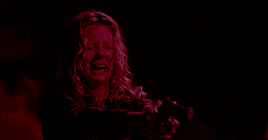



“Everybody just thinks I’m this bad shitty fucking person, and all I’m fucking tryin’ to do is survive, you know?”
Monster (2003)
dir. Patty Jenkins
2K notes
·
View notes
Text
Monster and The Tragic Lesbian Troupe

Patty Jenkin’s 2003 film, Monster, is based on the famous serious killer Aileen Wuornos. When searching up Wuornos, they don’t mention the fact that she is a lesbian however she is portrayed as such in the film and the readings. The film starts with Wuornos narrating her childhood. Growing up, she never fit in with mainstream society, was anti-social and struggled to get a man to be interested in her. The scenes in the film surrounding her childhood show Wuornos pleasing the male gaze and being treated as just a whore. She never finds anyone that actually cares about her enough. The film returns to the present where Wuornos walks in to a gay bar on accident. She is approached by Selby who is just looking for a friend to talk to since everyone else in the bar is ignoring her. Wuornos states that she’s not gay and doesn’t want anything to do with Selby. However, Selby admits that she just wants a friend because she can’t be her gay self at home. Selby and Wuornos start forming a connection. On the night that Wuornos is expected to go out with Selby, Wuornos meets up with a “John” to make some money. Wuornos has been prostituting herself since she was a teenager and it all goes bad when “John” ties her up, rapes her and almost kills her. Wuornos manages to grab the gun in her bag and kills “John”. Then, she shows up at Selby’s place and without confessing the truth find comfort in Selby’s arms. They start going on dates and Wuornos promises Selby a better life. Selby then leaves with Wuornos.
Wuornos gets a motel with Selby. She refuses to go back to prostituting because she’s traumatized from her last experience. However, with the pressure of finding a decent job and making money to take care of herself and Selby, Wuornos is pressured to confessed to Selby about her past crime. Wuornos then goes back to prostitution with a catch. She kills almost every man she meets up with even if they don’t do anything to her. She gets caught up when she kills a police officer. She confesses to Selby that she is still killing men. Wuornos gives Selby money and let’s her leave. One nigh Wuornos meets up with her friend Thomas and he turns her in. They don’t have any hard proof until she makes a call to her girl (Selby). Wuornos not knowing states all her crimes to Selby who on the other end of the phone is with police officers. The person who Wuornos though loved her back ends up being the one turning her in. She gets convicted.
In the reading, Lesbian Violence as Fascist Crusade in Monster, Terri Ginsberg critics this film, “Monster is hardly a pro-lesbian film; it is conservative multiculturalism at its worst.” Mainly because Monster follows the tragic lesbian troupe where Wuornos is depicted to only identify as a lesbian because no man wants her. And when she builds a connection with Selby, she is constantly bringing up her misfortunes in life to justify her crimes. Her relationship with Selby is toxic. Selby has no sympathy for Wuornos, she mainly sees her as an escape from her family. Being a lesbian is constantly being associated with rebellion. The film shows how Selby felt she was doing the right thing by listening to her family at the end, that being a lesbian was the reason she was involved with criminal activity. In the end, there was no happy ending. The tragic lesbian troupe is using lesbians in film for commercialization only to have them suffer at the end.

1 note
·
View note
Photo
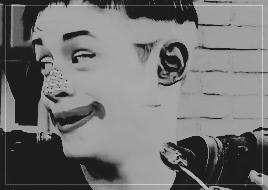





Macaulay Culkin in Party Monster (2003)
“Oh, typical James. Can’t even stay awake for your own movie. But it’s not your movie, it’s really my movie. Hi, I’m Michael Alig.”
2K notes
·
View notes
Text
Party Monster: Drugs, Love and Queers that Kill

Fenton Bailey and Randy Barbato’s Party Monster tells the true story of Michael Alig, a young party promoter who was imprisoned after the murder of Andre “Angel” Melendez.
Party Monster dives into the popular Club Kid scene that blossomed in the 80′s. Club Kids were known for their unique looks and knack of partying. Alig, new to New York, meets James St. James, an established Club Kid. With the help of St. James, Alig becomes a notable promoter himself. After submerging himself in the Club Kid scene, Alig becomes addicted to hardcore drugs, a habit that later consumes him.
Alig buys his drugs from Angel Melendez, who Alig claims was a no one before he came into the picture. Once the two become roomates, Alig begins to steal Melendez’s stash, causing a rift between the two since Alig already owes Melendez money for past drug purchases. One night, during a confrontation between the two, Alig and friend Robert “Freez” Riggs, attack Melendez. The two eventually murder Melendez, throw his body in the bathtub, and eventually dismember him.
While visiting St. James in the hospital, Alig confesses to the crime. St. James urges Alig to turn himself in, but Alig quickly changes the topic by explaining that he was going to rehab to turn his life around. Alig eventually relapses and falls back into his old ways. St. James takes it upon himself to help get Alig arrested. At the end of the film, St. James gets a call from Alig, who is now in prison. Alig tells St. James that he saved his life.
The film shows how Alig was never able to maintain a successful relationship due to his erratic and selfish behavior. One person who was always by his side was St. James, he helped develop Alig’s persona and tried to set him straight when his drug addiction was spiraling out of control. St. James saw past the character that Alig was playing, and that led to him sending him to prison in order to better himself.

0 notes
Text
Plata Quemada (Burnt Money) and Internalized Homophobia
Marcelo Piñeyro’s, Plata Quemada (Burnt Money), tells a tale of two men El Nene and Angel who have a complicated relationship. Although famously known as the twins because of their similar looks and crimes, they are far from siblings. Both engage in an ongoing sexual and emotional relationship that reveals the experience of a queer that kills. From the beginning, it’s established that they have a history of committing crimes and getting away with them. However, this film doesn’t focus on the crimes themselves but how El Nene and Angel deal with their relationship while committing these crimes. They seem to be doing fine until they join a group of other criminals who want to commit a crime that will bring both great fortune. They commit the crime and while doing so, Angel gets shot. Although it would be smart at that point to leave Angel dead there, El Nene can’t bare leaving his loved one and decides to save angel. This causes them to leave DNA and traces of who committed the crime. They are then force to leave Argentina to hide their identities.
Going to Uruguay causes a lot of distress for El Nene and Angel since they are not allowed to go out, speak to anyone else or commit anymore crimes. Angel has expressed many times that he hears voices. El Nene has tried to help angel live his life and ignore the voices, however, Angel is just getting worse. The two are constantly being made fun of by the other members of the team for being gay. Both Angel and El Nene start to re-examine their sexuality. Already getting hate from outsiders causes them to internalize homophobia and attack each other. Angel turns to religion to feel pure and holy once again. As being gay is known to be a sin, Angel is constantly praying it away. He pushes El Nene away and refuses to have sex. El Nene has a different approach, he starts cheating on angel with other men to fill the emptiness that angel has left him with. He deals with his internalized homophobia by having sex with a women. He convinced himself that he can build a life with her. However, towards the end when the authorities catch up to the team, El Nene chooses Angel. They die in each other’s arms.
Although the last few movies have centered on queers killing others, we see that Angel and El Nene are ultimately killing themselves. Their emotional weight of being queer causes them to hurt each other and leads to their death. Internalized homophobia is common in the gay community and it is the reason many have committed suicide. Although there is more queer representation, mainstream society still fails to accept us for who we are.

0 notes
Photo



Plata quemada directed by Marcelo Piñeyro, 2001
2K notes
·
View notes
Photo


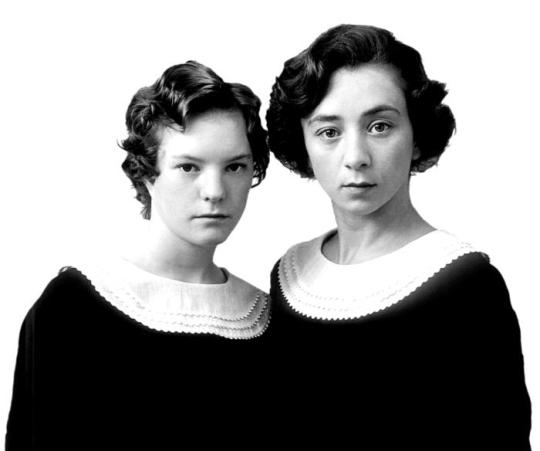
The original Papin sisters, Christine and Lea, british film Sister My Sister released in 1994 starring Joely Richardson and Jodhi May, and french film Les blessures assassines (Murderous Maids), released in 2000 starring Sylvie Testud and Julie-Marie Parmentier.
52 notes
·
View notes
Text
Sister My Sister and The Papin Enigma

Nancy Meckler’s Sister My Sister explores the case of Christine and Lea Papin, two sister chambermaids who murdered their employer, Madame Danzard, and her daughter, Isabel, around 1930′s France. Sister My Sister tells the story of the sisters from the assumption that Christine and Lea were in a homosexual relationship.
The viewer watches as the relationship between the sisters progresses from merely Christine trying to take on the role of a mother figure to Lea, to a sexual relationship. The two isolate themselves from the world, spending most of their quality time in their room, and cutting ties with their mother. As the sisters become comfortable with their blossoming relationship, they start to become careless with their maid duties, which frustrates Madame Danzard.
In a confrontation with the girls, Madame Donzard implies that the two are sinful and should be ashamed of their actions, never specifying what actions she is referring to. Madame Donzard threatens to fire the two, and claiming that she will make sure the two never work together again. This infuriates Christine, who has always been protective of Lea. While Madame Donzard berates the pair, Christine lunges at her and gouges her eyes while Isabelle watches. Lea then begins to attack Isabelle, beating her with a sculpture and then gouging her eyes out as well. After the brutal attack, the two wash the blood off of their hands, and wait for the police in their room. When they are eventually found, they are seen embracing while nude.
Sister My Sister does not show any of the trial after the murder, but we hear a judge question the sisters. He asks if “it” was just sisterly love that the two shared. The judge, just like Madame Danzard, does not specifically accuse the girls of lesbianism, but the viewer is meant to interpret what the public thought of Christine and Lea. Outside of the film, Lea Papin expressed that all the two shared was a sisterly bond, while Christine was sent to an asylum and had a nervous breakdown which resulted in her death. Similar to Heavenly Creatures, the Papin sisters saw the Danzards as an obstacle standing the way of them being together, so they had to be eliminated.

0 notes
Photo

Two scars from the same wound.
Bound for life.
Bound by blood.
28 notes
·
View notes
Text
I Can’t Sleep and The Minority Discourse
Claire Denis, I Can’t Sleep, uses three storylines to tie in the plot of queers that kill. However, two of the storylines are closely tied to the minority discourse. The story mainly focusing on one of the killers, Camille, a black male. Camille is a drag queen, model and a lover. His story is tied with the second storyline which is about his brother. Camille is humanized by the interactions with his young nephew. He is seen babysitting him and only truly smiling when he’s with his nephew. The movie cuts between scenes of him with his family and scenes with his partner. Camille interactions with his lover are toxic. He is constantly reminding his partner that he wouldn’t let him down and that he will commit the crimes with him. Neither of them are innocent. They seem to get off at the fact that they kill old women. However, the movie doesn’t focus on his partner as much. The movie highlights some of his struggles being a black man while also being queer.
Camille hides his queerness. He doesn’t like to mention it around his family and he never addresses where he is at night, which is a local drag club. The film highlights the struggles about being queer. The sneaking around, the lying, and the struggles to to be yourself. This wasn’t his only discourse, as a black man Camille was followed by the cops first. They easily identified him in the streets and questioned him about his papers. The cops were pleased to hear that he didn’t have identification, it confirmed their theory that he was criminal with no papers. Camille suffered harder treatment than his white partner. His partner wasn’t brought into question until the end of the film. They didn’t show their consequences.The ending of the film left the audience with a negative view on the Camille more than his lover. This is the minority discourse.
The minority discourse turns into a troupe for new queer cinema. Since being queer means being a minority, the films we have watched in the class show that the crimes committed are influenced by the experience of being queer.

0 notes
Photo
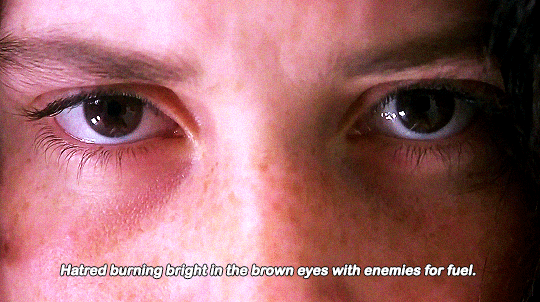


Heavenly Creatures (1994) dir. Peter Jackson
2K notes
·
View notes
Text
Heavenly Creatures and Lesbian Erasure

Peter Jackson’s Heavenly Creatures focuses on the murder of Honora Parker at the hands of her daughter, Pauline, and her girlfriend, Juliet Hulme. The two young girls befriended each other in school, and quickly developed an intense relationship. As the two become closer, their feelings for one another begin to grow fonder and they quickly realize that they are in love with each other. Pauline and Juliet are not the only two who become aware of their feelings towards each other, but so does Juliet’s father, Dr. Hulme.
As soon as Dr. Hulme begins to believe that something more than friendship is going on between the two girls, he meets with Pauline’s parents in order to warn them of what is happening. Pauline’s parents are horrified at the though of their daughter being in love with another woman, so much so that they take her to a doctor to try and “cure” her. After briefly speaking with the doctor, he diagnoses Pauline with homosexuality, and reassures her mother that it is just a phase. Juliet’s parents take a different approach in dealing with her dependency on Pauline, they plan on sending her to South Africa to live with a family member.
The girls, distraught at the thought of being separated, decide to take actions into their own hands. They plan to murder Honora, who they believe is what is standing in the way of them being together, and run off to Hollywood. While on an outing, Juliet and Pauline whack Honora with a thick brick and kill her while she screams and gasps for air. Although they remove what they believe to be their biggest obstacle from their lives, the two wind up being caught just a few hours later. They are both sentenced to five years in jail, and once released are not allowed to speak to each other again.
Adrienne Rich’s Compulsory Heterosexuality describes how lesbianism has been seen as some sort of disorder in the past. An escape from men. Rich discusses how it was believed that women chose lesbianism as a way to feel closer to other women, almost to replicate sacred relationships women had with their mothers. She also divulges into the idea that men try to control women’s sexuality as a way to prevent them from practicing homosexuality. This can be seen in Heavenly Creatures when Juliet’s dad tries to break the two apart after becoming suspicious of the two. Although the girls perceived Honora as the villain in their fairy tale, it was Juliet’s father who was the catalyst in ending the relationship between the girls. Dr. Hulme and Honora both tried to change the girls and pretend like their feelings towards each other were not real, or something they could just outgrow. In order to be accepted in society, Juliet and Pauline were going to have to erase part of who they were.

0 notes
Text
Swoon
Boys will be boys
Tom Kalin’s 1992 film, Swoon reveals that queerness may not always be seen as an identity but as ones biggest weakness. Two men Richard Loeb and Nathan Leopold Jr. find themselves in a relationship intertwined with the satisfaction of committing crimes. They start with small ones such as breaking windows and stealing until it’s not enough. They finally come to the conclusion of killing a boy. When convicted, they are representing in court in two different ways. As they fight in court, the two sides bring out two negative views about queerness. The defense makes a case that the relationship of the two men is strictly due to the years of bad influence and deviance. Their queerness is erased and it’s put into a bad light. By representing queerness in this way, it is telling the audience that queerness comes from deviance. That queerness is a case for the few that have been through traumatic experiences that they feel they have to lash out in a way that’s different from the norm. Although, we know this not to be true, it works in the favor for the defendants. On the plaintiff side, the relationship between the two is real. However, the plaintiffs believe that their queerness is why they choose the boy to commit the crime. The men are psychos but they are also rapists. This ties queerness to being a pervert. That because they are gay they will do harm to little boys and are mentally unstable. Therefore, their killing is influenced by their queerness either way. In the end, “boys will be boys”. What does this mean for queers that kill? This means that they cannot be judged without factoring sexual orientation. This film is influential because it is a representation of how society ties in outside factors such as sexual orientation, class, race, etc to someone’s acts. They aren’t regular killers to the eyes of the audience. They are queers that kill.
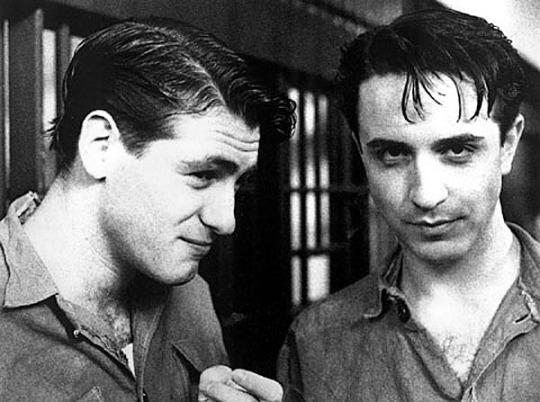
0 notes

